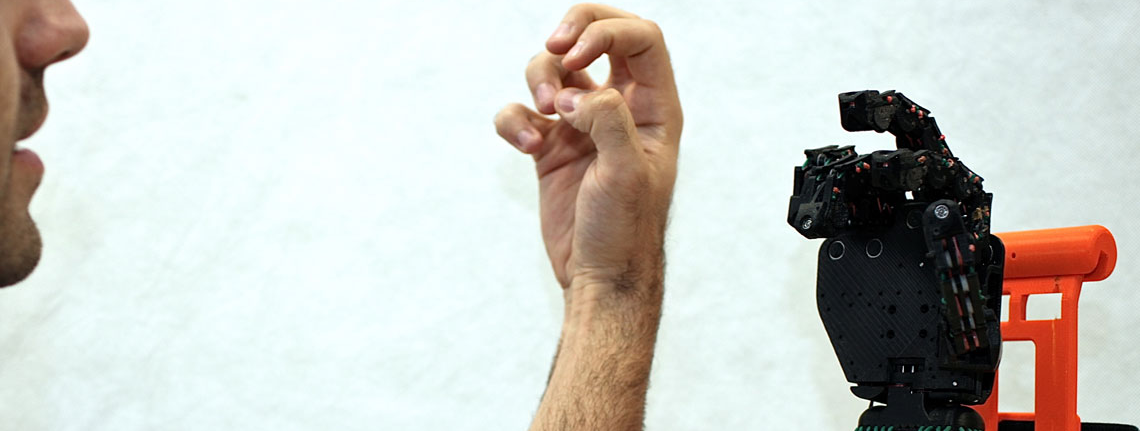Models to Predict Humans

The research plan in modelling and analysis of the human motor behaviour is to capitalize on the group’s expertise in the development of reduced complexity models that can be used for real-time control of the robots or assistive devices in environments with dynamic uncertainties. Rather than a direct copy, our objective is to extract human sensorimotor principles that can be potentially replicated by the artificial systems.
- A. Ajoudani, "Transferring Human Impedance Regulation Skills to Robots", Tracts in Advances Robotics Star, Springer, 2016.
- A. Ajoudani, E. Hocaoglu, A. Altobelli, M. Rossi, E. Battaglia, N. Tsagarakis, A. Bicchi , "Reflex Control of the Pisa/IIT SoftHand during Object Slippage", IEEE International Conference on Robotics and Automation (ICRA), 2016.
Reduced Complexity Representation of Human Physical Interaction Behaviour
Our objective here is to develop reduced complexity models of the human mechanical behaviour that can be tracked in real-time using a minimum number of sensory information. The integration of such models in tele-impedance, human-robot collaboration and interaction scenarios will contribute to a seamless robotic response.
- A. Ajoudani, C. Fang, N. Tsagarakis, and A. Bicchi "Reduced-Complexity Representation of the Human Arm Active Endpoint Stiffness for Supervisory Control of Remote Manipulation", The International Journal of Robotics Research, 2017, accepted.
- A. Ajoudani, C. Faneg, N. G. Tsagarakis, and A. Bicchi, "A Reduced-Complexity Description of Arm Endpoint Stiffness with Applications to Teleimpedance Control", IEEE International Conference on Intelligent Robots and Systems (IROS), 2015.
Common-Mode and Configuration Dependent Stiffness Control in Robotic Grasping
Object manipulation using hands is a compelling topic in which the interaction forces play a key role. These influence the stability of the grasp and the dexterity of the hand manipulation. A well-known technique to modulate these forces is through the grasp stiffness. Inspired by the observations on human motor behaviour, this reserach aims at developing novel control methods that exploit the dominant contribution of the finger poses to the major axes directions of the grasp stiffness ellipsoid. This is achieved by the optimisation of the hand/fingers posture minimizing the error between the desired orientation of the grasp stiffness ellipsoid and the obtained one. The adjustment of the volume of the ellipsoid is achieved through the adaptation of the fingers joint stiffness in a coordinated way.
- V. Ruiz Garate, M. Pozzi, D. Prattichizzo, N. Tsagarakis, and A. Ajoudani, "Grasp Stiffness Control in Robotic Hands through Coordinated Optimization of Pose and Joint Stiffness", IEEE Robotics and Automation Letters, 2018
- V. Ruiz Garate, M. Pozzi, D. Prattichizzo, and A. Ajoudani, "A bio-inspired grasp stiffness control for robotic hands", Frontiers in Robotics and AI, 2018.
